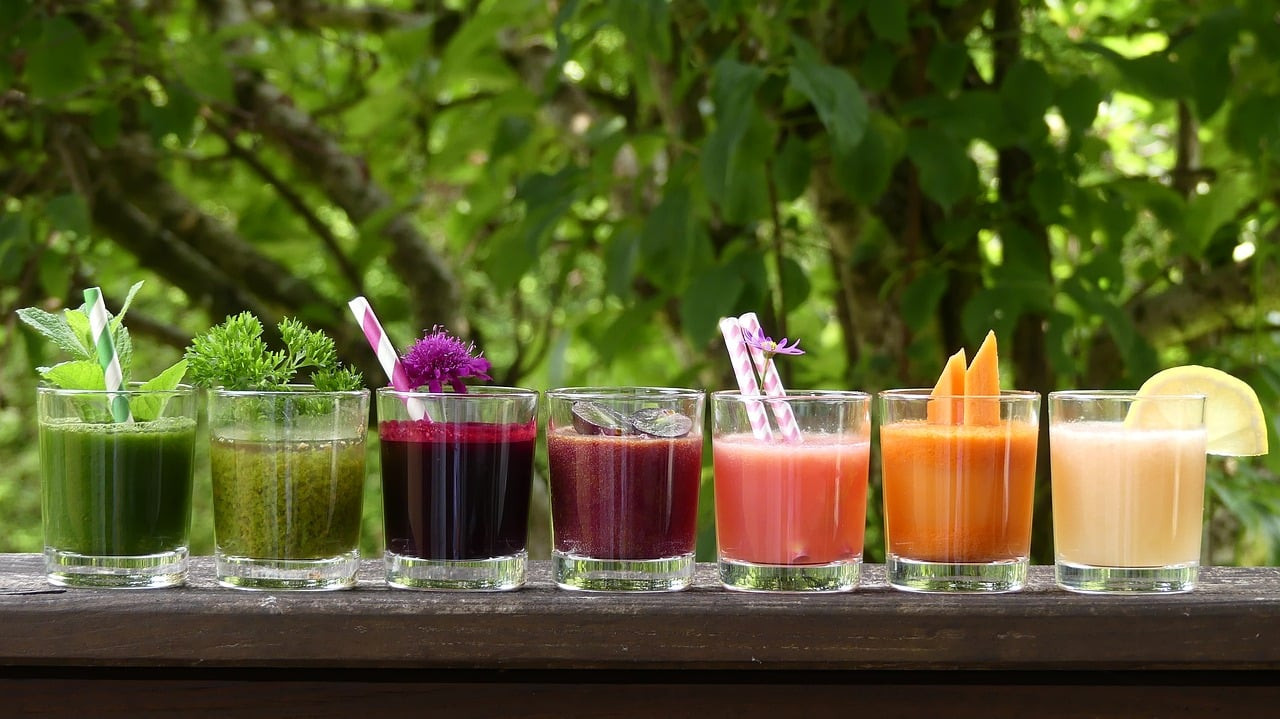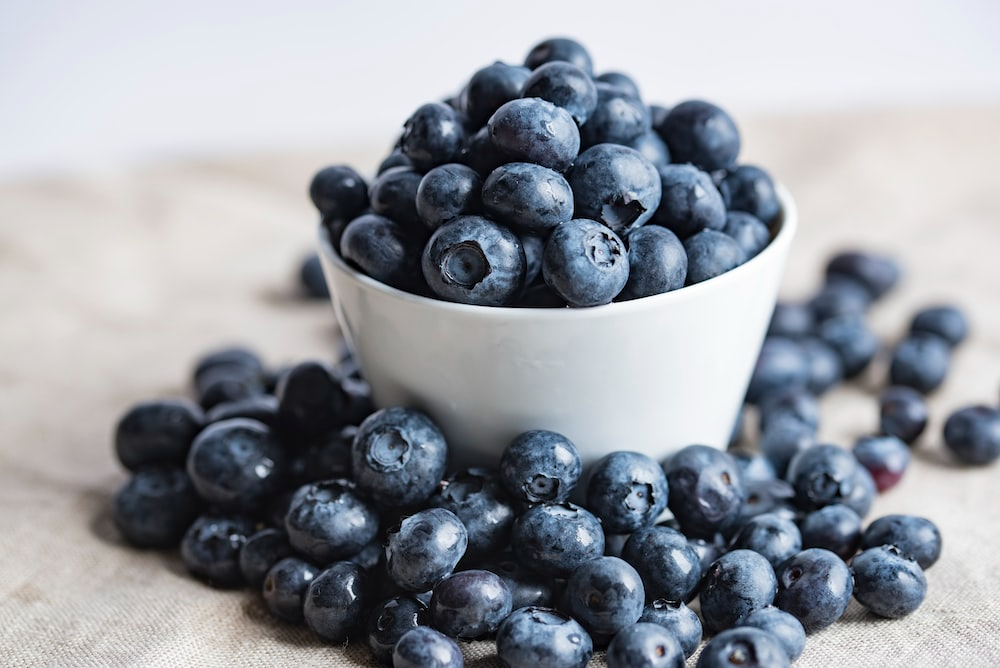
The Juicy Truth: Pros and Cons of Juicing and the Top 6 Fruits or Veggies to Juice
If you’re a woman on a journey to improve your health and wellness, you’ve probably heard about the benefits of juicing. Juicing has become increasingly popular as a way to incorporate more fruits and vegetables into your diet in an easy and convenient way. However, like with any health trend, there are pros and cons to consider before jumping on the juicing bandwagon. In this blog post, we will explore the advantages and disadvantages of juicing, as well as highlight the top 6 fruits or veggies that are perfect for juicing.
Let’s start with the pros of juicing. One of the biggest benefits of juicing is that it allows you to easily consume a larger quantity of fruits and vegetables in one sitting. This can be especially beneficial for women who struggle to meet their daily recommended intake of produce. Juicing also helps to break down the cell walls of fruits and vegetables, making it easier for your body to absorb the nutrients they contain. Additionally, juicing can be a great way to increase your energy levels, boost your immune system, and improve digestion.
On the flip side, there are some cons to consider when it comes to juicing. One downside is that some juices can be high in sugar and calories, especially if they contain a lot of fruit juice. It’s important to be mindful of portion sizes and choose mostly vegetables with a small amount of fruit when juicing. Another con is that juicing removes fiber from fruits and vegetables, which is an important nutrient for digestive health. To combat this, you can try adding some of the pulp back into your juice or incorporate whole fruits and vegetables into your diet as well.
Now let’s talk about the top 6 fruits or veggies that are perfect for juicing:
- Kale - packed with vitamins A, C, and K, kale is a nutrient powerhouse that makes a great addition to any juice blend.
- Carrots - rich in beta-carotene and antioxidants, carrots are known for their skin-boosting properties.
- Apples - sweet and refreshing, apples add natural sweetness to juices without causing a spike in blood sugar levels.
- Celery - hydrating and low in calories, celery juice is great for promoting hydration and supporting healthy digestion.
- Ginger - anti-inflammatory and immune-boosting, ginger adds a spicy kick to juices while providing numerous health benefits.
- Spinach - loaded with iron, magnesium, and vitamin C, spinach is an excellent choice for green juice blends.
Basically, juicing can be a valuable tool for when you are looking to improve your health by increasing their intake of fruits and vegetables. However, it’s important to weigh the pros and cons before incorporating juicing into your routine. By choosing mostly vegetables over fruit-based juices and being mindful of portion sizes, you can enjoy all the benefits that juicing has to offer while minimizing any potential drawbacks. And by including nutrient-dense options like kale, carrots, apples, celery ginger,and spinach in your juice blends, you can create delicious concoctions that support your overall well-being..
Cheers to happy juicing!

The Art of Oil-Free Sautéing: A Guide to Water Sautéing Vegetables
In the world of culinary arts, sautéing is a technique celebrated for its ability to quickly cook ingredients while sealing in flavors. Traditionally, this involves cooking food quickly in a small amount of oil over high heat. However, a growing trend towards health and wellness has seen an upsurge in water sautéing – a technique that promises the same delicious outcomes minus the oil. This blog explores the what, why, and how of oil-free sautéing, offering insights into its benefits and sharing a quick, tasty recipe to get you started.
What is Water Sautéing?
Water sautéing is an innovative cooking method that substitutes oil with water or broth. This technique involves cooking vegetables (or any food you would typically sauté) in a small amount of water, keeping the heat high enough to softly cook the food while imparting it with a tender, flavorful finish.
The Benefits of Avoiding Oil When Cooking
1. Reduced Caloric Intake: One of the most immediate benefits of water sautéing is the significant reduction in calories. Oil is calorie-dense, and even a small amount can add hundreds of calories to your dish without increasing the volume or satiety.
2. Promotes Heart Health: Eliminating oil can help reduce the intake of unhealthy fats, particularly trans and saturated fats found in some oils, promoting a healthier cardiovascular system.
3. Maintains Nutrient Integrity: Cooking with water can help preserve the natural nutrients of vegetables better than oil, which may undergo oxidative degradation at high temperatures, potentially forming harmful compounds.
4. Enhances Natural Flavors: Water sautéing helps in bringing out the natural flavors of the ingredients, making your vegetables taste more genuine and vibrant without the overshadowing taste of oil.
How To Do Water Sautéing
Technique and Tips:
- How Much Water to Use: Start with a small amount, about 2-4 tablespoons for a pan of vegetables. The key is to add just enough water to prevent sticking while cooking, not to waterlog the food.
- Keep It Moving: To mimic the traditional sauté, keep the ingredients moving frequently by stirring or tossing, ensuring even cooking and preventing any sticking or burning.
- Gradual Addition: If the water evaporates before the food is thoroughly cooked, add more water, a tablespoon at a time, to finish cooking.
- High Heat: Maintain a high heat throughout the cooking process to ensure a good sear on the vegetables, similar to what you’d achieve with oil.
Quick Recipe Using Water Sautéing
Simple Garlic Green Beans
Ingredients:
- 1 lb fresh green beans, trimmed
- 4 cloves garlic, minced
- Salt and pepper to taste
- ½ cup vegetable broth or water
Instructions:
- Heat a large pan over medium-high heat. Add the garlic and 2 tablespoons of vegetable broth to the pan, stirring frequently for about 1 minute.
- Add green beans and the rest of the broth. Season with salt and pepper.
- Cover and cook, stirring occasionally, until the beans are tender but still crisp, about 3-4 minutes.
- Uncover, increase the heat, and continue cooking until most of the liquid has evaporated. Serve immediately.
The Flavor of Food When Water Sautéing
While the absence of oil might seem like it could detract from the flavor, water sautéing actually allows the inherent flavors of the vegetables to shine. The method encourages the blooming of spices and the caramelization of natural sugars in vegetables, leading to a clean and distinct taste profile that might be obscured by oil.
In summary, water sautéing is not only a healthful alternative to traditional sautéing methods but also an easy technique to adopt in everyday cooking. It preserves the texture and enriches the natural flavors of food, offering a delicious way to enjoy your favorite dishes, guilt-free. Give it a try, and you might find that water sautéing becomes a staple in your culinary repertoire.

Understanding the intricate relationship between physical activity and cortisol levels is critical for anyone aiming to enhance their overall health. Cortisol, known as the "stress hormone," plays a vital role in our body's response to stress, influencing metabolism, immune response, and blood pressure. Regular physical activity has been shown to effectively regulate cortisol levels, promoting a sense of calm and triggering the release of endorphins, which are beneficial in lowering cortisol.
The effects of elevated cortisol levels include weight gain, fatigue, anxiety, and sleep disturbances, with women under chronic stress being particularly susceptible. Managing stress through targeted strategies such as meditation, yoga, and sufficient rest is crucial in maintaining balanced cortisol levels. Moreover, adopting a healthy lifestyle that encompasses a balanced diet, consistent exercise, and regulated sleep patterns can significantly contribute to the regulation of cortisol production, supporting adrenal function.
For those experiencing persistent symptoms indicative of high cortisol levels, consulting a healthcare provider is strongly recommended. Chronic high cortisol can lead to severe health issues, including diabetes, hypertension, and depression. Hence, prioritizing both mental and physical health through a comprehensive approach that includes exercise, stress management techniques, and a nutritious diet is essential for maintaining balanced cortisol levels and enhancing overall well-being.
Read more...
You are not a number: How to weigh yourself without becoming obsessed
Ladies, we all know the drill. You go on a diet, you start exercising, and the first thing you do is bolt to your bathroom scale like it holds the secrets to the universe. But what does that number really tell you? And why do we so easily become obsessed with it? In this post, we’ll discuss why it’s important to weigh yourself on a scale, but not obsess over it. We’ll also give you some simple steps to take, so you can weigh yourself without losing your mind.
First, let’s talk about what important information you can get from that number on the scale. Obviously, your weight measures your body mass, which can be a helpful indicator of your overall health. However, it is only one part of a bigger picture. That number doesn’t take into account your body composition, which includes your muscle mass and water percentage. It’s important not to view your weight as the only marker of your health. Instead, pay attention to how you feel, how your clothes fit, and what you are able to do physically. These things can help you gauge your overall fitness and health, in tandem with the scale.
Now, let’s talk about the benefits of weighing yourself. For one thing, it can motivate you to continue your weight loss or fitness journey. Seeing progress can be empowering and rewarding. The scale can also serve as a tool for self-awareness. It can help you identify patterns and behaviors that may contribute to fluctuations in your weight and assist you in maintaining a healthy weight.
But there are negatives to weighing yourself, too. Obsession with that number can quickly lead to disordered eating habits, self-destructive behavior, and mood disorders. If the scale has become a source of anxiety or obsession for you, try taking a break from it. Give yourself a break from the numbers by either adopting a different method of measuring progress or taking some time away from weighing yourself altogether.
So how to avoid becoming obsessed with the scale? Here are three simple steps that can help:
Choose the right time to weigh yourself: Weigh yourself at the same time of the day, wearing similar clothing, to get a consistent and accurate measurement.
Weigh yourself with positivity: Create an encouraging environment for yourself, instead of a negative or judgemental one. Remind yourself that it’s important to track your progress and celebrate your successes along the way.
Use the scale as one tool, not the only tool: Consider incorporating measurements like body fat percentages or strength measurements to get a fuller picture of your overall health.
Keeping track of our weight is part and parcel with maintaining a healthy lifestyle. But it’s important to remember that our value and self-worth are not rooted in the number on a scale. Weighing yourself can be an informative and encouraging tool, but it’s important to use it in a healthy way. By following these simple steps, you can avoid becoming obsessed with the scale and focus on your overall wellness. Remember, you are not a number!
If you would like to learn more about how to incorporate Healthier Habits, come join our online community!

 Blueberries are one of the most nutritious and delicious fruits on the planet! Not only are they bursting with flavor, but they're also packed with health benefits that can help you live your best life. In fact, blueberries are considered one of the highest antioxidant foods, according to research from Tufts University, a private research university in Massachusetts.
Blueberries are one of the most nutritious and delicious fruits on the planet! Not only are they bursting with flavor, but they're also packed with health benefits that can help you live your best life. In fact, blueberries are considered one of the highest antioxidant foods, according to research from Tufts University, a private research university in Massachusetts.But what makes these little blue balls of goodness so darn special, you may ask? Well, for starters, they contain a variety of vitamins and minerals, including vitamins C and K, potassium, and manganese. All of these essential nutrients work together to support your immune system, improve heart health, and aid in digestion.
But perhaps the most impressive benefit of blueberries is their ability to help reverse the signs of aging. That's right, studies conducted by Tufts University have shown that blueberry extracts can actually help to slow down aging on a cellular level. This is due to the high levels of antioxidants found in blueberries, which work to protect your cells from harmful free radicals that can cause damage and accelerate aging.
Not only that, but blueberries have also been found to assist in lowering blood pressure, improving brain function and memory, reducing inflammation, and even aiding in weight loss. So, if you're looking to improve your overall health and wellbeing, incorporating blueberries into your diet is a smart choice.
Try using blueberries on top of your salad or even in your smoothie! Best ever are frozen blueberries in your hot oatmeal in the morning! No matter how you eat them, just get this superfood in your body!
So why not start adding these sweet and juicy berries to your morning smoothie, lunchtime salad, or even as a tasty snack in the afternoon? Trust us, your body (and taste buds!) will thank you.
If you would like to learn more about health and wellness and how to create healthier habits feel free to click HERE to join my online community! I have tons to share with you!







